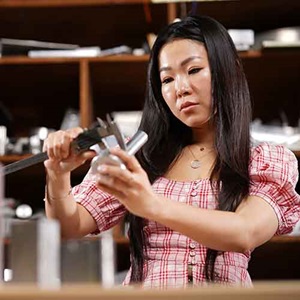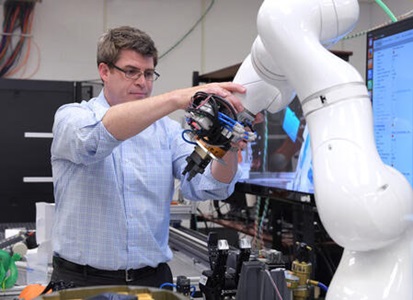LIDAR Technology at Work

By Rick Robinson
The disastrous fire in early 2019 that badly damaged Notre Dame Cathedral set in play a sequence of events that may end up protecting U.S. troops in combat and other dangerous environments.
The story actually begins well before the fire —with a 2014 video game called Assassin’s Creed Unity set in 18th century Paris. The game developers used LIDAR (Light Detection and Ranging) to create a gloriously detailed, virtual model of Notre Dame. The technology uses laser light to detect and track objects, much like how radar uses microwaves.

Restoration and Ideation
Yaakov Schefres, a systems engineer with Northrop Grumman, played Assassin's Creed Unity and remembered the vivid virtual model of Notre Dame. He thought of it again when news stories detailed how the LIDAR data generated for the game was helping engineers tasked with restoring the damaged cathedral.
If a LIDAR unit were fitted to a drone, thought Schefres, it could provide similar detailed spatial reconstruction data — and provide it flexibly, with mobility, avoiding costly setup of equipment at each survey location, all important attributes to Northrop Grumman customers and warfighters.
Schefres mentioned the idea to colleagues at work, and it began to sprout. But the delicate sprouting of a new concept needs potting soil. Happily, some was available.
Within Northrop Grumman is an organization called Blue Labs — what Schefres succinctly describes as "the wild idea shop resembling Shark Tank."
Incubation for Innovation Helps Warfighters
Schefres succinctly describes Blue Labs as "the wild idea shop resembling Shark Tank." Schefres' idea found a home in an innovation working group called the Venture Incubator program that provides employees funding, business advice, classes, and mentorship to make their ideas a reality.
In this fertile environment, this idea evolved into a project called Pathfinder, as it began to take a more definite form. A drone fitted with LIDAR technology could do all sorts of survey work, but it could also do something far more sensitive: fly into a dangerous urban environment, even a building interior inaccessible to GPS data, and give American troops a quick, real-time look at the layout, obstacles, and hazards.
To help develop the business case and secure the value proposition of Pathfinder, the team focused on research and conducted interviews with multiple warfighters. They heard the same messages time after time: Unfamiliar, hostile environments are incredibly dangerous. Reliable recon information is precious. Anything that shows our warfighters what they are facing will save lives.
Object Detection, Object Tracking, and Localization
An idea is one thing. Making it happen means wrestling with the details. The challenge for Pathfinder is mounting not only a LIDAR unit on a drone, but also a computer powerful enough to put the data to work in real time.
A LIDAR unit generates a “point cloud” — a dense set of distance measurements that must be interpreted into objects and, more importantly, boundaries with which one can navigate.
Initial testing has shown that available technology meets the benchmark standard to justify further development, but it is a long journey from bench test to battlefield.
How Practice and Culture Support Innovation in Engineering
Meanwhile, Schefres drew two key insights from the Pathfinder launch experience, one about engineering practice, the other about engineering culture.
The engineering practice insight is that what he calls generative engineering, where "the solution space isn't even defined yet," explains Schefres. The engineer has to determine the contours of the possible, as opposed to reductive engineering in which engineers solve specific problems for a customer.
The engineering culture insight that Schefres draws from Pathfinder is simpler: Great engineering organizations support wild ideas.
More Innovation Stories
Read all stories about advanced technology and innovation >>


